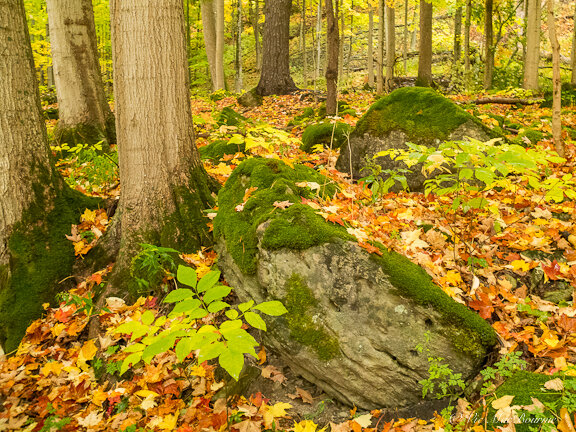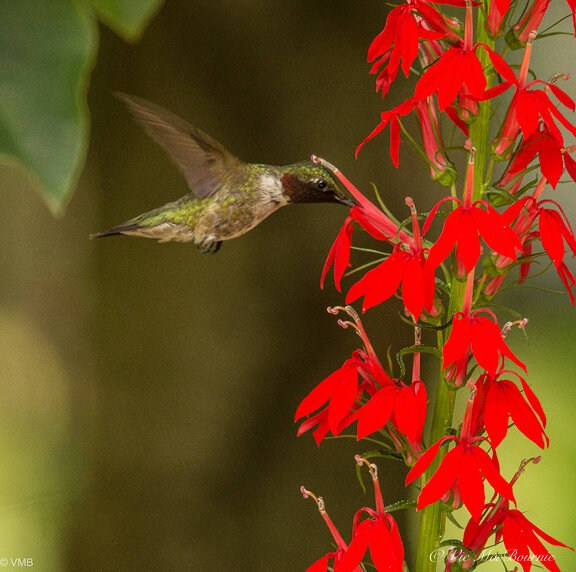Why digging up or picking wild flowers threatens our natural areas
Is it illegal? It’s certainly almost always unethical
We all like to save money, but digging up wildflowers is not the way to do it.
Not only is digging up plants on public property including parks and conservation areas likely illegal in most states and provinces, more importantly it’s an attack on our natural ecosystem that is already facing threats to its survival.
Even if it’s not illegal, in most situations, it is not the ethical thing to do.
You might ask: ‘what’s the harm of taking one or two plants from acres and acres of plants?’
Consider that every year more and more people discover the joys of being outdoors and experiencing nature. In fact, more than 500 million people visit public lands each year in the United States alone.
Imagine the devastation to the national forests if just a fraction of these people choose to dig up small trees, shrubs and rare flowers to take back home with them for their gardens, where the flora most likely die a slow death in the wrong soil, in the wrong lighting conditions and without the forest ecosystem that played an important role in their survival.
Public lands provide us with places to relax and unwind and offer incredible inspiration for our own woodland gardens. (For my full article about using natural woodlands as inspiration for our woodland gardens, click here.)
If you are interested in exploring the world of shade gardening further, you might like my recent post on The Natural Shade garden.
Respect wild areas and leave any wildflowers where they grow. Harvesting a tiny amount of seeds can sometimes be acceptable if approval is first obtained from the landowners.
It’s important to remember, however, that the real purpose of the plants, trees and shrubs in our parks, forests and public lands is not to provide a beautiful landscape. The prime purpose of these landscapes is to provide and sustain life in many forms – from the smallest insects to the largest mammals, from lichens and mosses and rare plants to monster-size redwoods.
Ontario’s 36 Conservation Authorities main purpose, for example, is not to provide outdoor areas for the public to go for walks and enjoy nature (although they are very successful in this endeavour), their real purpose is to maintain the vitality of our watersheds and protect peoples’ lives and property from natural hazards such as flooding and erosion. Click here to go to the Ontario Conservation Act.
“Sometimes this drive to do the right thing is met with some knowledge gaps, especially when we are new to gardening with native species. Our actions need to be viewed collectively, and we must ask ourselves: If everyone did this, would this action be okay. ever it is, the way you tell your story online can make all the difference.”
These public lands play an important part in helping to clean our air and water and provide some of the last habitat for the protection not only of our endangered wildlife but the plants that are often intertwined with the survival of this very wildlife. They provide homes for rare host plants for threatened butterflies, nesting habitat or food for endangered birds or vital to the survival of native bees.
Every time a visitor digs up a plant, a small tree or a shrub they threaten this ecological web and weaken an already fragile ecosystem.
If that’s not enough of a reason, consider that stealing from nature can land you in big trouble.
Removing anything from Canada’s national park is strictly forbidden. Technically, you are not even allowed to pick flowers.
Hummingbird on Cardinal flower.
The following is taken from the National Park’s system general regulations:
10. No person shall remove, deface, damage or destroy any flora or natural objects in a Park except in accordance with a permit issued under subsection 11(1) or 12(1).
11. (1) A Director-general may issue a permit to any person authorizing the person to take flora or natural objects for scientific purposes from a Park or to remove natural objects for construction purposes within a Park.
(2) A permit issued by the Director-general under subsection (1) shall specify the kind and amount of and the location from which flora or natural objects may be removed and the conditions applicable to the permit.
(3) Where natural objects are removed for the purpose of constructing other than a public work within a Park, every person on removal of such natural objects shall pay to the superintendent the sum of twenty-five cents for each cubic yard of such natural objects or fraction thereof.
12. (1) The superintendent may issue a permit to any person authorizing the person to remove, deface, damage or destroy any flora or natural objects in a Park for purposes of Park management.
(2) A permit issued by the superintendent under subsection (1) shall specify the kind and amount of and the location from which flora or natural objects may be removed, defaced, damaged or destroyed and the conditions applicable to the permit.
But let’s face it, not all situations are the same. It can be a very complex discussion, especially when you get out of national parks and other public lands.
Is it okay to dig plants, collect seed and remove small trees and shrubs from areas that are threatened by increased farming, planned subdivisions or urban areas that are being taken over by non-native vegetation and being destroyed by neighbourhood teens using them as their own playgrounds? Maybe a small woodlot is being taken over by a group of dog owners using them as their personal dog park. As a result, the dogs are ripping up areas of endangered wildflowers, maybe even rare orchids or wild lupines.
Action to save these plants, it could be argued, certainly needs to be considered.
Ferns and Feathers tapped into experts in the field for their opinions on this important discussion.
Kristen Miskelly, a biologist with specialty in the botany and ecology of southeastern Vancouver Island and a co-founder of Saanich Native Plants, is quick to point out the dangers we face as the environment continues to be threatened by climate change and other, man-made, highly destructive actions.
“The natural world needs our help more than ever and people are trying to do their part by growing native plants,” explains Miskelly, who teaches at the University of Victoria.
“Sometimes this drive to do the right thing is met with some knowledge gaps, especially when we are new to gardening with native species.
“Our actions need to be viewed collectively, and we must ask ourselves: “If everyone did this, would this action be okay.
“Digging up wildflowers is almost always not the best approach and, in fact, can be very harmful. Some of the negative side effects to ecosystems include disruption of soil leading to colonization of non-native invasive species and reducing prospective generations of the given plant by reducing propagules reaching the soil.
“Furthermore, hand dug plants from the wild are not as successfully transplanted as nursery- grown.
Most ecosystems are already seriously degraded and often just shadows of their remnant range and species abundance and diversity. It would be difficult to rationalize depriving them more for our personal gains in a garden setting.
“With so many serious threats to the natural world associated with harvesting or digging up plants, there are very few cases where this approach is warranted.
Are there times where plants can be salvaged?
According to Miskelly there are times when digging plants to save them from destruction makes sense.
“Inherent Indigenous harvesting rights and salvaging from an organized plant salvage from a development site are good examples of when plant collecting is okay,” she explains.
“So, what is the best approach?
“There is an array of native plant growers who are growing in a sustainable and ethical way. Support these growers, by purchasing your plants or seeds from them.” she explains.
“You can go a step further by questioning nurseries about their growing protocols and what steps they take in making sure their methods are sustainable. When you initiate or grow your garden in this way, you can not only benefit nature, but also lend your support to a green economy.”
Reyna Matties from Ontario Native Plants echoes similar concerns over the harvesting of native plants.
“Rescuing plants from sites makes sense when an area is getting developed or altered. In other cases, it is much better to grow your own plants or support a local nursery that is sustainably sourcing seeds and growing local species (like Ontario Native Plants),” she explains.
“Harvesting plants from wild places is quite taboo to any ecologically minded individual due to the potential damage it can do to the habitat for the plants and wildlife that call it home. It is like someone coming to your yard and pulling up your plants. They are not yours, so better to not take them. There are so many other ways to get plants.”
Reyna explains that anyone who harvests seed should always follow sustainable seed practices by taking only a small peercentage of a parent plant’s seed. Even if you are taking just a few seeds, she explains that you “also want to make sure you have permission from the land owner to be taking seed from that specific location.”
“By sustainably collecting seed, you are actually helping plants proliferate, which is a great thing,” she explains.
In conclusion
Taking plants from national parks, nature reserves and conservation areas is absolutely the wrong approach. Rescuing plants from threatened areas can be done under the guidance of experts through a local wildflower group or conservation group. Taking a small percentage of seeds with the approval of a land owner can be a legitimate approach, as well.
The best, method of collecting rare or highly sought after flora is to purchase it through a reputable native wildflower seller. These outlets exist throughout the United States and Canada, and can be found either through the World Wide Web or, better yet, through local wildflower associations or your local garden club.
As an affiliate marketer with Amazon or other marketing companies, I earn money from qualifying purchases.


